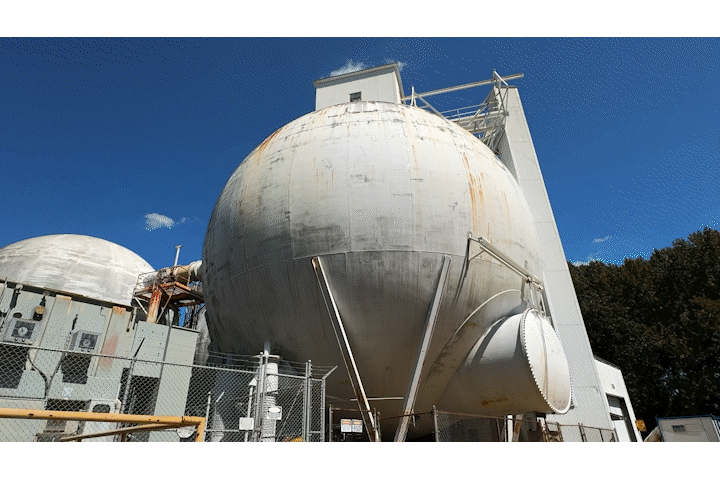
Color-discerning capabilities that NASA's Curiosity rover has been using on Mars since 2012 are proving particularly helpful on a mountainside ridge the rover is now climbing.
These capabilities go beyond the thousands of full-color images Curiosity takes every year: The rover can look at Mars with special filters helpful for identifying some minerals, and also with a spectrometer that sorts light into thousands of wavelengths, extending beyond visible-light colors into infrared and ultraviolet. These observations aid decisions about where to drive and investigations of chosen targets.
One of these methods for discerning targets' colors uses the Mast Camera (Mastcam); the other uses the Chemistry and Camera instrument (ChemCam).
Each of the Mastcam's two eyes -- one telephoto and one wider angle -- has several science filters that can be changed from one image to the next to assess how brightly a rock reflects light of specific colors. By design, some of the filters are for diagnostic wavelengths that certain minerals absorb, rather than reflect. Hematite, one iron-oxide mineral detectable with Mastcam's science filters, is a mineral of prime interest as the rover examines "Vera Rubin Ridge."
"We're in an area where this capability of Curiosity has a chance to shine," said Abigail Fraeman of NASA's Jet Propulsion Laboratory, Pasadena, California, who leads planning for the mission's investigation of Vera Rubin Ridge.
This ridge on lower Mount Sharp became a planned destination for Curiosity before the rover landed five years ago. Spectrometer observations from orbit revealed hematite here. Most hematite forms in the presence of water, and the mission focuses on clues about wet environments in Mars' ancient past. It found evidence during the first year after landing that some ancient Martian environments offered conditions favorable for life. As the mission continues, it is studying how those conditions varied and changed.
Curiosity's ChemCam is best known for zapping rocks with a laser to identify chemical elements in them, but it also can examine targets near and far without use of the laser. It does this by measuring sunlight reflected by the targets in thousands of wavelengths. Some patterns in this spectral data can identify hematite or other minerals.
"The colors of the rocks on the ridge are more interesting and more variable than what we saw earlier in Curiosity's traverse," said science team member Jeffrey Johnson of the Johns Hopkins University Applied Physics Laboratory, Laurel, Maryland. He uses both Mastcam and ChemCam data for analyzing rocks.
Hematite occurs at sufficiently small grain sizes in rocks found at this part of Mars to preferentially absorb some wavelengths of green light. This gives it a purplish tint in standard color images from Curiosity, due to more reflection of redder and bluer light than reflection of the green wavelengths. The additional color-discerning capabilities of Mastcam and ChemCam show hematite even more clearly.
Johnson said, "We're using these multi-spectral and hyper-spectral capabilities for examining rocks right in front of the rover and also for reconnaissance -- looking ahead to help with choosing where to drive for closer inspection."
For example, a false-color Sept. 12 panorama combining Mastcam images taken through three special filters provided a map of where hematite could be seen in a region a few days' drive away. The hematite is most apparent in zones around fractured bedrock. The team drove Curiosity to a site in that scene to check the possible link between fracture zones and hematite. Investigation with Mastcam, ChemCam and other tools, including a camera and brush on the rover's arm, revealed that hematite is also in bedrock farther from the fractures once an obscuring layer of tan dust is brushed away.The dust doesn't coat the fractured rock as thoroughly.
That finding suggests that dust and fractures cause the hematite to appear more patchy than it actually is. If the hematite is broadly distributed, its origin likely was early, rather than in a later period of fluids moving through fractures in the rock.
"As we approached the ridge and now as we're climbing it, we've been trying to tie what was detected from orbit to what we can learn on the ground," said Curiosity science team member Danika Wellington of Arizona State University, Tempe. "It's still very much a work in progress. The extent to which iron-bearing minerals here are oxidized relates to the history of interactions between water and rock."
The U.S. Department of Energy's Los Alamos National Laboratory in Los Alamos, New Mexico, developed ChemCam in partnership with scientists and engineers funded by the French national space agency (CNES). Mastcam was built by Malin Space Science Systems, San Diego. JPL, a division of Caltech in Pasadena, California, manages the Mars Science Laboratory Project for NASA's Science Mission Directorate, Washington, and built the project's Curiosity rover. For more information about Curiosity, visit:
News Media Contact
Guy Webster
Jet Propulsion Laboratory, Pasadena, Calif.
818-354-6278
guy.webster@jpl.nasa.gov
Laurie Cantillo / Dwayne Brown
NASA Headquarters, Washington
202-358-1077 / 202-358-1726
laura.l.cantillo@nasa.gov / dwayne.c.brown@nasa.gov
2017-284
from News and Features http://ift.tt/2gUXA4u
via IFTTT


No comments:
Post a Comment